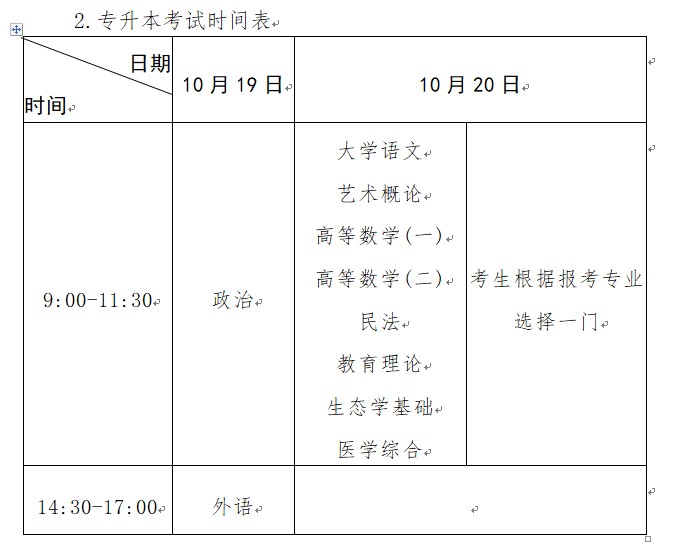be动词的一般现在时用法讲解
- 校园网
- 2024-04-21 13:01:10
- 47

1、be动词的一般现在时
be动词是系动词的一种,表示“……是……”的意思。现在式(The Present Forms)有am,is,are三种。这三种动词的原形是be,所以它们称为be动词。
2、 be动词的现在式
be动词的现在式有am,is,are三种,分别接在不同人称的主语之后:
2.1 be动词句型的构成
肯定句:主语 + be动词(am/is/are)...
否定句:主语 + be动词(am/is/are) + not...
疑问句:be动词(am/is/are) + 主语...?
疑问代词/疑问副词 + be动词(am/is/are) + 主语...?
2.2 be动词的肯定句
句型:主语 + be动词...
be动词的肯定句由“主语 + be动词(am/is/are) + 表语”构成:
I am a doctor.我是一名医生。
Mary is at work.玛丽在工作。
He is very brilliant.他非常聪明。
It is a nice day.今天天气晴朗。
You are my only friend.你是我惟一的朋友。
They are students.他们是学生。
2.3 be动词的否定句
句型:主语 + be动词(am/is/are) + not...
be动词一般现在时的否定句结构,是在be动词am,is,are之后加not:
We aren't her classmates.我们不是她的同班同学。
I'm not Tom.我不是汤姆。(I'm是I am的缩写,读作/aim/。)
It's not a cat,but a dog.这不是猫,而是狗。
Things are not always what they seem(to be).事物并不总是与表象一致。
be动词否定句的缩写方式:
is not的缩写是isn't,读作/′iznt/;are not的缩写是aren't,读作/a:nt/;I am~的否定句是I am not~,缩写为I'm not~;am not不缩写在一起。
2.4 be动词的一般疑问句
句型:be动词 + 主语...?
回答方式:Yes,主语 + be动词(am/is/are)...
No,主语 + be动词(am/is/are) + not...
be动词的一般疑问句是将be动词置于主语之前(大写am/is/are的第一个字母),在句尾加问号;这种语序是主语和谓语倒装语序:
肯定句:They are fruit.它们是水果。
疑问句:Are they fruit? 它们是水果吗? (主语和谓语倒装)
肯定句:The book is on the table.书在桌子上。(主语和谓语倒装)
疑问句:Is the book on the table? 书是在桌子上吗?
回答由be动词构成的疑问句时,肯定要用Yes,否定用No:
Are you John's brother? —Yes,I am.你是约翰的兄弟吗? ——是的,我是。
Are Mary and John still at school? —No,they are not.玛丽和约翰仍在学校吗? ——不,不在了。
Are you there? 喂,你听着吗? (打电话时用)
【注意】 Yes或No的后面一定要加逗号,其后的主语小写,I(我)除外。I永远大写。在回答句子时,主语必须是代词。
2.5 be动词的特殊疑问句
句型:疑问代词(主语) + be动词(am/is/are)...?
疑问代词/疑问副词 + be动词(am/is/are) + 主语...?
用who和how等疑问代词或疑问副词与be动词构成的疑问句称为特殊疑问句。就主语提问时,如果主语是疑问代词或是带有疑问限定词的名词词组,如What number is...? (什么数字是……? ),Which boy likes...? (哪个男孩喜欢……? ),Whose car is...? (谁的车是……? )等,将疑问代词或带有疑问限定词的名词词组置于be动词之前(am,is,are的第一个字母无需大写),在句尾加问号;这种语序是陈述句语序。就表语提问时,则以一个疑问代词或疑问副词开头,之后是“be动词 + 主语...”(am,is,are的第一个字母无需大写),在句尾加问号;这种语序是主语和谓语倒装语序。be动词的特殊疑问句不能用Yes或No来回答:
who“谁”:
Who is there? 谁在那里? (就主语提问)
Who is she? —She is my mother.她是谁? ——她是我母亲。(就表语提问)
Who are they? —They are John’s classmates.他们是谁? ——他们是约翰的同学。
what(指某一或某种未知的事物或人)“什么”:
What are these? —These are books.这些是什么? ——这些是书。
What are they? —They are sailors.他们是干什么的? ——他们是海员。
What is Susan like? 苏珊是什么样的人? /苏珊的人品如何? (就介词宾语提问)
whose“谁的”:
Whose house is this? —The house is Jane's.这是谁的房子? ——是简的房子。
Whose are these shoes? —They are Tom's.这些是谁的鞋子? ——是汤姆的鞋子。
which“哪一个、哪一些”:
Which of these books is yours? 这些书中哪一本是你的?
Which is heavier,iron or copper? 铁和铜,哪一个更重?
where“在哪里”:
Where is he? —He's upstairs/at home/in the office.他在哪里? ——他在楼上/在家里/在办公室。
Where are John and Tom? —They are at school.约翰和汤姆在哪里? ——他们在学校。
how“怎样、如何”:
How is Helen? —She is very well,thank you.海伦好吗? ——她很好,谢谢您。
How old is your son now? —He is fifteen.你儿子多大年纪了? ——他15岁了。
How is the weather today? —The weather is nice today.今天天气怎样? ——今天天气很好。
2.6 There is/are的用法
There is/are用于表示某物或某人的存在。
1.There is/are...的肯定句
句型:There is/are + 单数/复数名词 + 表示地点/场所的词或短语:
There's someone at the door to see you.门口有个人要见你。
Where there is a will,there is a way.有志者事竟成。
There's a cool breeze this evening.今晚有凉爽的微风。
There are many flowers in the garden. 园子里有很多花。
引导词 真正的主语 地点状语
There be结构为倒装句,真正的主语是There is/are后的名词,如上述例句。详见第25章倒装25.1完全倒装。有的辞典将There be结构中的There列为代词,作be的主语(参见《郎文当代高级英语辞典》)。
2.There is/are的否定句
句型:There is/are + not...
There is/are的否定句是在is/are后面加not:
There isn't going to be a party tonight.今晚没有聚会。
There aren't any cakes left.没有一点蛋糕剩下来。
3.There is/are的疑问句
一般疑问句句型:Is/Are there...?
There is/are的一般疑问句是将is/are调到there前面,大写is/are的第一个字母:
Is there anything you want to tell me? 你有什么事情想告诉我吗?
Are there enough tools to go round? 工具够大家用吗?
特殊疑问句句型:疑问副词 + 形容词 + 名词 + is/are + there...? There is/are~的特殊疑问句是以“疑问副词 + 形容词 + 名词等”开头,之后是“is/are + there? ”:
How much are there? 有多少?
How many rooms are there in each flat? 每套房子里有多少个房间?
How many students are there in your class? 你班上有多少名学生?
【注意】 There be结构中的谓语有时不用动词be,而用seem,appear等:
There appeared to be no one who could answer our inquiries.似乎没有人能回答我们的询问。
There appears to have been a nasty accident.似乎发生了一起严重事故。
There seems(to be)no doubt about it.此事似乎无可置疑。
There don't seem to be any missing.好像没有什么丢失了。
2.7 Here的句型
句型:Here is/are + 名词.
用于把某物给某人。主语为名词时,动词放在名词之前;主语为代词时,动词放在代词之后:
Here are two boys.这里有两个男孩。(名词之前)
Here is the book you want.你要的书在这里。
Here is the pound I owe you.这是我欠你的英镑。
Here they/we are! 他们/我们终于到了!(代词之后)
但是:
Here you are(it is).(=Here is what you asked for.)你所要的东西在这里。/你找的东西在这里。
此句型还可用于引起对某物或某人注意:
Here comes the manager.经理来了。
Here he comes.他来了。
本站内容来源于网络,并不代表本站立场!版权归原作者所有,转发请注明来源,文章内容仅供参考。
校园网--www.xiaoyuan.org 联系邮箱:service@xiaoyuan.org
本文链接: http://www.xiaoyuan.org/blog/23976.html
上一篇
become的用法
 校园网
校园网























